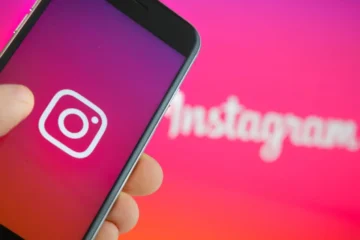Social media has become an integral part of our personal and professional lives. With its widespread use, businesses and individuals have recognized the importance of maintaining a solid online presence. However, social media also presents its fair share of risks, including the potential for a social media crisis. It occurs when an organization faces a significant adverse event or backlash on social media platforms, which can harm its reputation and business.
To understand what constitutes a social media crisis, it is equally important to recognize what does not qualify as one. This article sheds light on what is not an example of a social media crisis, helping individuals and organizations differentiate between minor issues and full-blown concerns. By understanding these distinctions, businesses can better navigate the social media landscape and mitigate potential risks.
1. Introduction
Social media platforms have revolutionized the way we communicate and interact with one another. For businesses, these platforms offer immense opportunities for brand exposure, customer engagement, and community building. However, the benefits come with certain risks, particularly in social media crises. While addressing and managing such situations effectively is essential, it is equally important to discern between minor and actual problems.
2. Clarifying the Concept of a Social Media Crisis
A social media crisis involves a significant event or incident on social media platforms that can harm a brand’s reputation, sales, or overall business. It often involves widespread negative sentiment, viral content, or intense backlash from the online community. To understand what does not qualify as a social media crisis, we must first differentiate between minor and severe problems that can impact an organization’s bottom line.
3. Noteworthy Situations That Do Not Constitute a Social Media Crisis
3.1 Negative Customer Feedback
Negative feedback from customers is an expected part of doing business. While addressing and resolving customer concerns is virtual, isolated instances of negative feedback, without significant repercussions, do not amount to a social media crisis.
3.2 Minor Complaints or Grievances
Every organization encounters minor complaints or grievances from time to time. These issues can often be resolved through effective customer service or public relations efforts. However, they should not be mistaken for a social media crisis unless they escalate into a more significant problem.
3.3 Social Media Trolls or Online Harassment
Unfortunately, social media platforms are not immune to trolls or online harassment. While dealing with such behaviour is essential, it does not necessarily constitute a social media crisis unless it significantly impacts the brand’s reputation or business operations.
3.4 Temporary Technical Glitches
Technical glitches or intermittent platform issues can occur on social media platforms. While they may cause inconvenience or frustration for users, they do not typically result in a social media crisis unless they persist for an extended period or significantly impact functionality.
3.5 Moderate Drop in Engagement Metrics
Fluctuations in engagement metrics, such as likes, shares, or comments, are common on social media platforms like Facebook and Twitter. A moderate drop in these metrics should be addressed, but it does not automatically signify a social media crisis unless it is part of a more significant, more substantial issue.
3.6 Sporadic Negative Comments or Mentions
Negative comments or mentions about a brand on social media can be expected, especially in larger organizations or industries with diverse opinions. Isolated incidents of negativity should be managed appropriately, but they should not be misconstrued as a social media crisis.
3.7 Isolated Instances of Miscommunication
Miscommunication can happen on social media platforms due to misunderstandings or errors. While it is crucial to clarify and correct such instances, isolated cases of miscommunication do not typically escalate into a full-blown social media crisis.
3.8 Dissatisfaction with Non-Critical Features
Customers may express dissatisfaction with non-critical features or aspects of a product or service. While it is essential to address their concerns, unless these dissatisfactions significantly impact the brand’s reputation or business, they do not qualify as a social media crisis.
3.9 Individual’s Personal Opinions or Rants
Social media users may share their opinions or rants about a brand or its offerings. Unless these opinions gain significant traction or negatively affect the brand’s image, they should not be regarded as a social media crisis.
3.10 Industry or Market Shifts
Industry or market landscape changes can lead to customer preferences or demand shifts. While these shifts may require adaptation and strategic adjustments, they do not inherently indicate a social media crisis.
4. Identifying the Factors that Differentiate Crisis
Certain factors should be considered to differentiate between minor issues and social media crises. These include the scale and intensity of negative sentiment, the reach and virality of the content, the potential for reputational damage, and the impact on business operations or sales. By analyzing these factors, organizations can better assess whether a situation qualifies as a crisis.
Related: Pinterest Blogs for Beginners | 2023
5. Conclusion
In conclusion, it is crucial to understand what does not qualify as a social media crisis to effectively manage online reputation and mitigate risks. By distinguishing between minor issues and fundamental problems, businesses can allocate resources more efficiently, focus on significant challenges, and protect their brand’s reputation. However, it is equally important to remain vigilant and address any emerging issues promptly to prevent them from escalating into full-fledged crises.
FAQs (Frequently Asked Questions)
Q1. How can businesses differentiate between a minor issue and a social media crisis?
To differentiate between a minor issue and a social media crisis, businesses should consider factors such as the scale and intensity of negative sentiment, the reach and virality of the content, and the potential for reputational damage or impact on business operations.
Q2. Are negative customer feedback and complaints always indicative of a social media crisis?
No, negative customer feedback and complaints are common in any business. They do not automatically signify a social media crisis unless they escalate into a more significant problem or have severe consequences.
Q3. Can sporadic negative comments or mentions about a brand on social media lead to a crisis?
Sporadic negative comments or mentions are a regular occurrence, especially for larger organizations or industries with diverse opinions. Isolated incidents of negativity should be managed appropriately but should not be regarded as a social media crisis unless they significantly impact the brand’s reputation or business.
Q4. How can organizations mitigate the risks of a social media crisis?
Organizations can mitigate the risks of a social media crisis by closely monitoring their online presence, promptly addressing customer concerns, implementing effective crisis management strategies, and maintaining open and transparent communication with their audience.
Q5. Should organizations ignore minor issues to focus solely on crises?
Organizations should promptly address and resolve minor issues to prevent them from escalating into crises. By addressing minor issues effectively, organizations can maintain a positive online reputation and minimize the potential for more significant problems.




